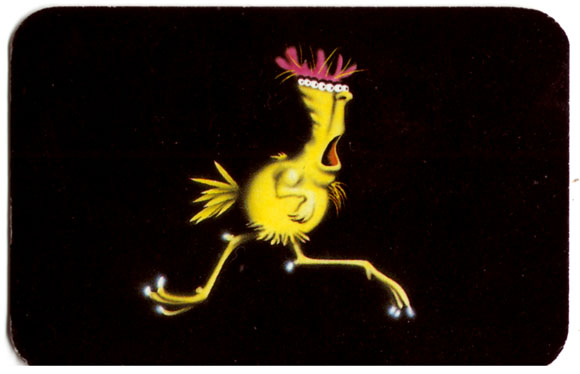Child of Eden arrived at Cologne Game Lab recently. In case you have been living on he dark side of the moon during the last year or so, it is the successor to the critically acclaimed electronic music shooter REZ by Tetsuya Mizuguchi. It is also THE one title every game connoisseur has waiting for to unleash the true potential of the Kinect. I myself have been holding out on Kinect just because of this game.
So when I first tried it, my expectation were very high. I was in for a roller coaster ride of emotions. In just a few hours I went immediately down to utter disappointment and then back up again to excitement. The game delivers on it’s promise in the end. But it’s not quite what one might expect. Well, actually it is. Let me explain:
In the past few days, I have been watching a couple of people try the game. Some get it immediately. Some struggle a lot. Many people (me including) jump in with both arms flailing and body moving, expecting to naturally play the game using every limb simultaneously. That’s obviously not how it works. And why should it really? After all, even such crude devices like the keyboard, the joypad or the mouse take a lot of practice to get used to. The first time you use them, it always feels awkward. And some people never manage to spend enough time with it to learn to use those devices properly. In some ways, it’s the same with Kinect and Child of Eden. Only the problem is magnified due to the fact that the device you are operating is a magnitude more complex. God knows what black magic the Kinect camera is doing to translate your awkward winking and shaking into sensible commands. Most of the time, it works as advertised and after an initial adjustment phase, you learn to wield the invisible lasers like a pro.
One thing I struggled with is the shooting. You shoot by thrusting your pointing hand towards the screen. If you start applying the rapid-fire arcade instincts to this gesture, you will soon end up with a very sore hand. And it won’t work so well anyway because Kinect is bad at recognizing the small, sudden jerky movements we usually associate with mashing buttons. So for me the penny dropped when I started firing by moving my hand gently forward in a big gesture – as if I pushed something away from me. The rate of recognition jumped up to pretty much 100%. My arm didn’t feel stiff after one level anymore. Also, the gentle movements felt much more in-tune with the game’s mesmerizing audio-visuals. Interestingly, the game’s system actually supports exactly this kind of gestures. The lock-on mechanic takes some time to acquire all 8 targets. So even if you are rapid-firing at a boss enemy, the resulting rhythm is much more in tune with gentle movements rather than sudden spasms.
So the bottom line is that Child of Eden and Kinect works, it just needs a certain acclimatization phase. The interesting this is that many didn’t expect that. The system’s very idea implies that by removing peripherals, we also remove the need to learn how to use the interface. As of we eliminated the middle-man and wired the game directly to our minds through our bodies. In hindsight it should have been obvious that this is bullshit. Every kind of computer interface requires learning and practice. Just look at Minority Report. Does that look unrehearsed and natural? Would you be able to use this system without prior knowledge? Even if one day in the future, we figure a way how to put a USB plug into our Brainstem, we still be learning how to make it do what we want to do.
And thus, Child of Eden is a enlightening experience in many ways. It showcases us the true limits of systems like Kinect and thus opens the way for new ideas. It’s also the litmus test for the Kinect system specifically. Luckily, it’s one where it comes out victorious in the end. If you just re-adjust your expectations it becomes exactly the unique, incredibly engrossing audiovisual trip we have been waiting for.











